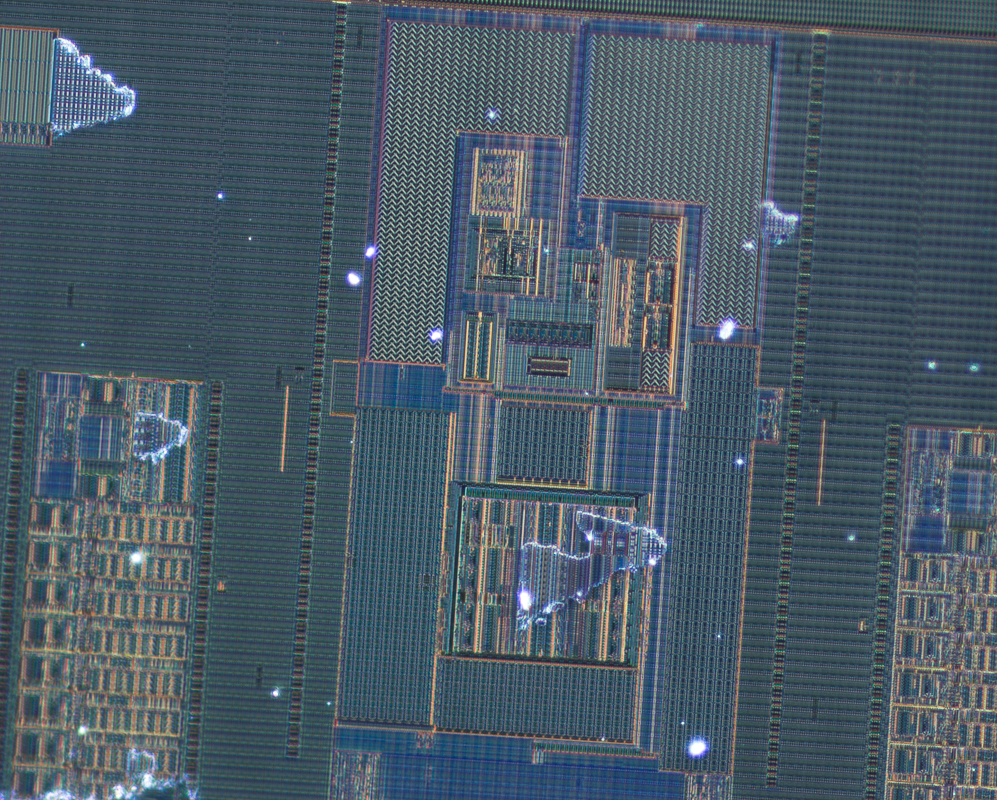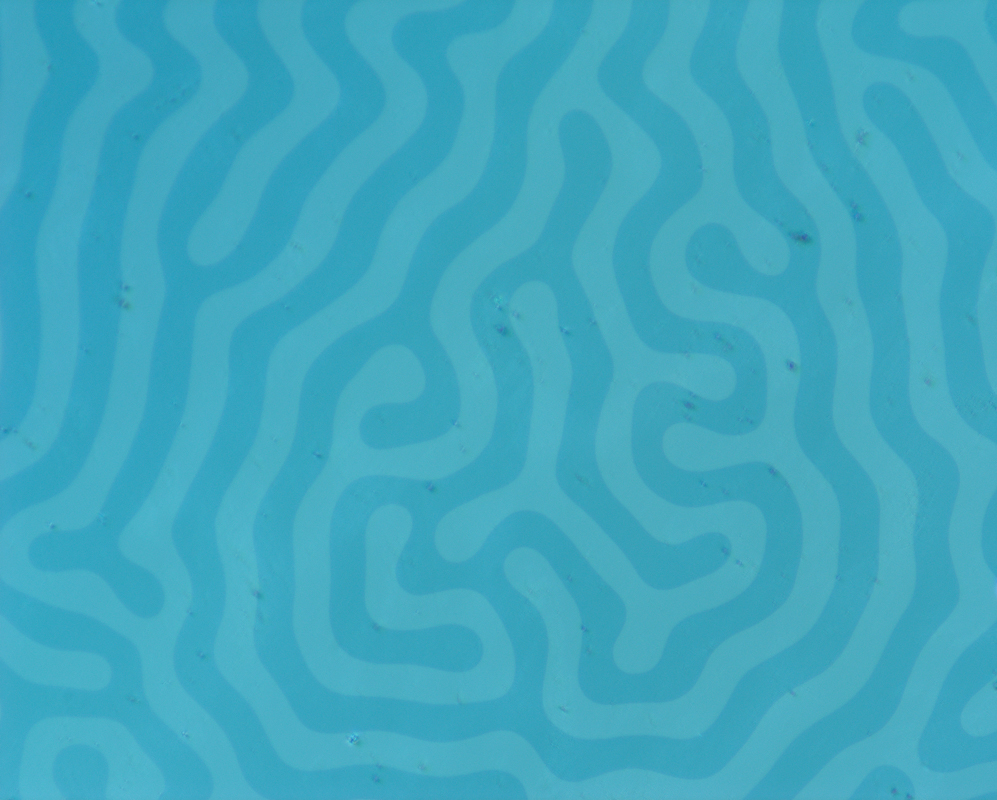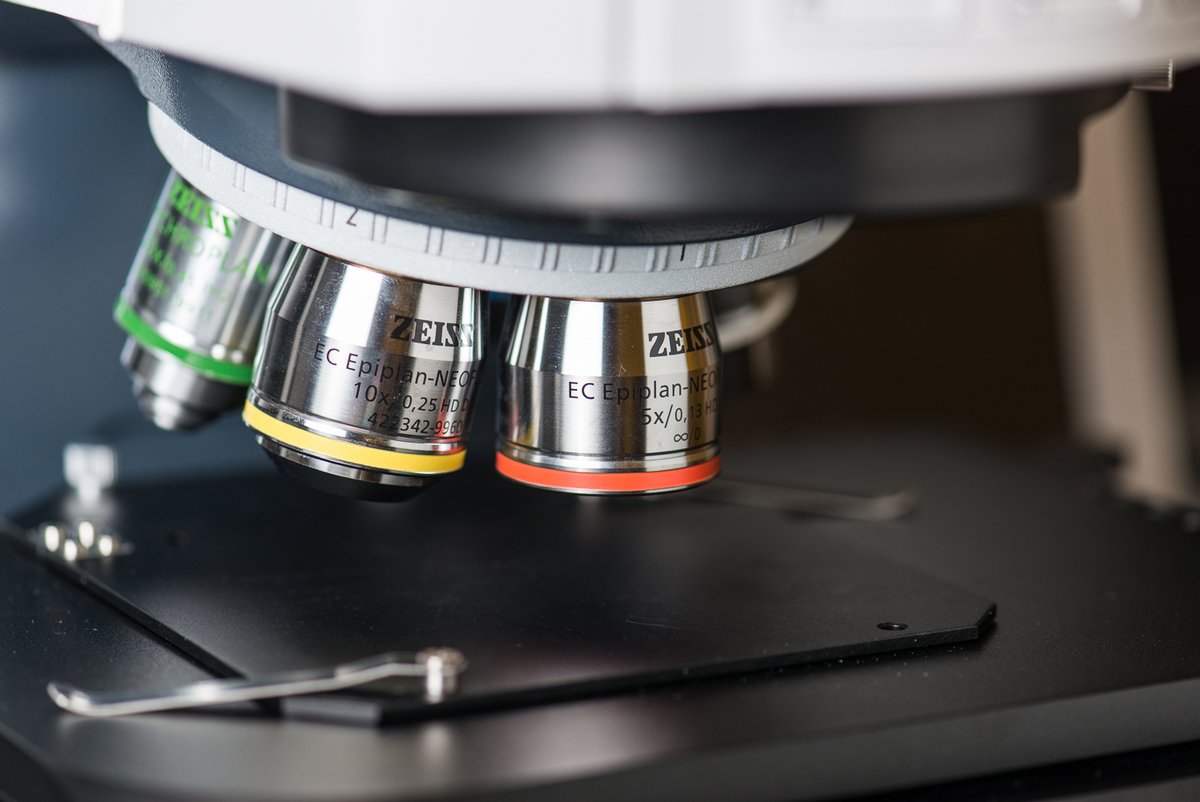
The Zeiss Axio Imager.M2m is a state of the art optical microscope. Images can be taken in
- bright field or
- dark field mode,
applying
- interference contrast,
- phase contrast or
- polarization contrast
if desired. LEDs with a color temperature ranging from 5700 K to 6500 K illuminate the sample in either in
- transmission or in
- reflection.
The microscope is equipped with EC Epiplan-NEOFLUAR objective lenses with magnifications 5x (NA 0.13), 10x (NA 0.25), 20x (NA 0.50), 50x (NA 0.8) and 100x (NA 0.90) suitable for interference and polarization contrast. Additionally, an N-ACHROPLAN 20x (NA 0.45) serves as objective lense for phase contrast.
The image can be viewed through a 10x ocular (field of view number: 23 mm) and recorded with an Axiocam 503 color camera.
bright field and dark field
The following images compare bright field (left) and dark field (right) illumination of a detail of a microarchitecture with a magnification of 50. The total image size is about 200 µm x 250 µm.
interference contrast
The following images of a detail of a microarchitecture and a CCD-Chip were taken in bright field with and without additional circular differential interference contrast (see image description after clicking on picture). The total image sizes are about 200 µm x 250 µm in case of the microarchitecture and 500 µm x 625 µm in case of the CCD-Chip.
-
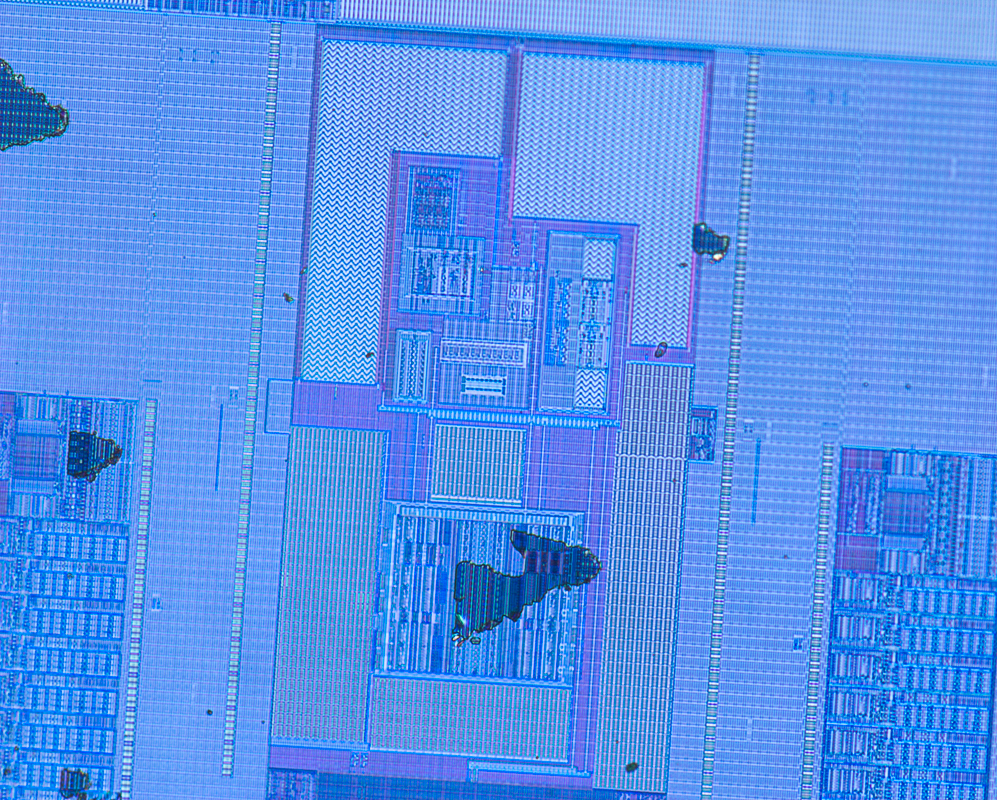
microarchitecture: bright field image; total image size approx. 200 µm x 250 µm; image taken by Gillian Kiliani -
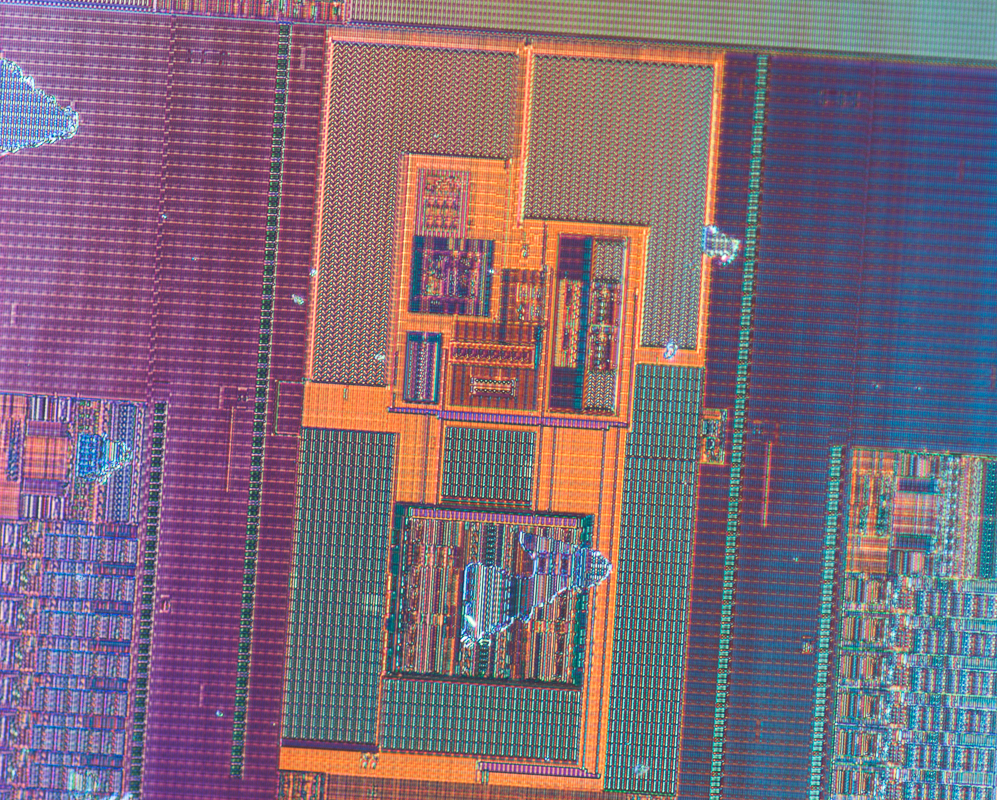
microarchitecture: bright field image with circular differential interference contrast; total image size approx. 200 µm x 250 µm; image taken by Gillian Kiliani -
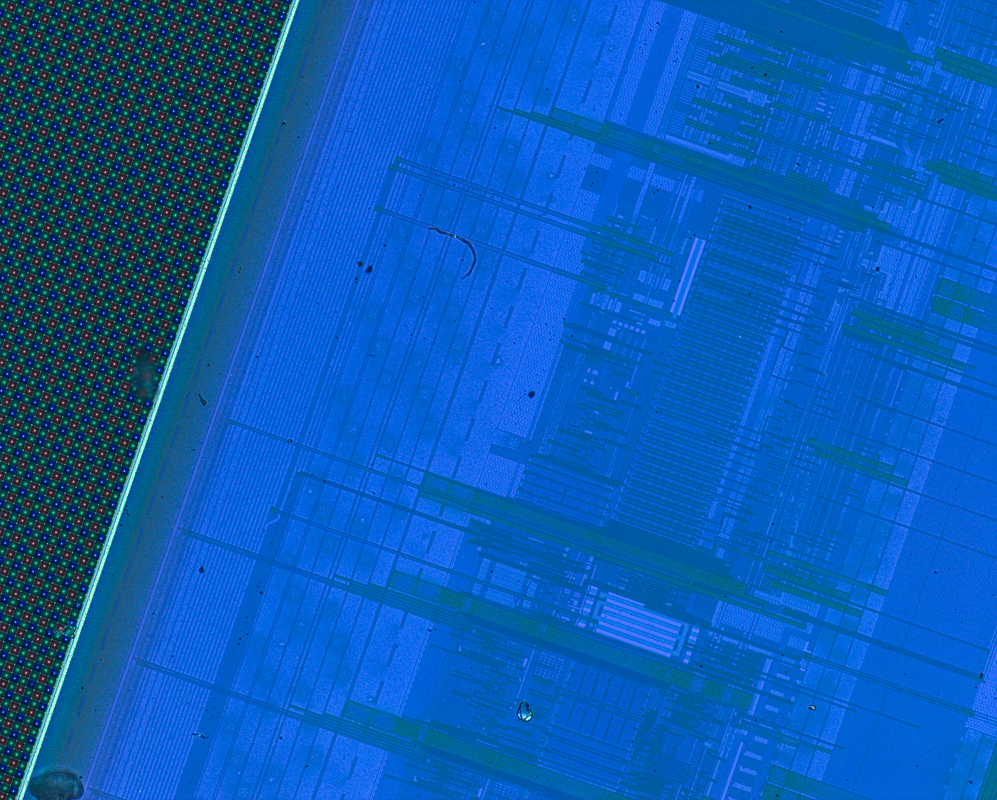
CCD-chip: bright field image; total image size approx. 500 µm x 625 µm; image taken by Gillian Kiliani -
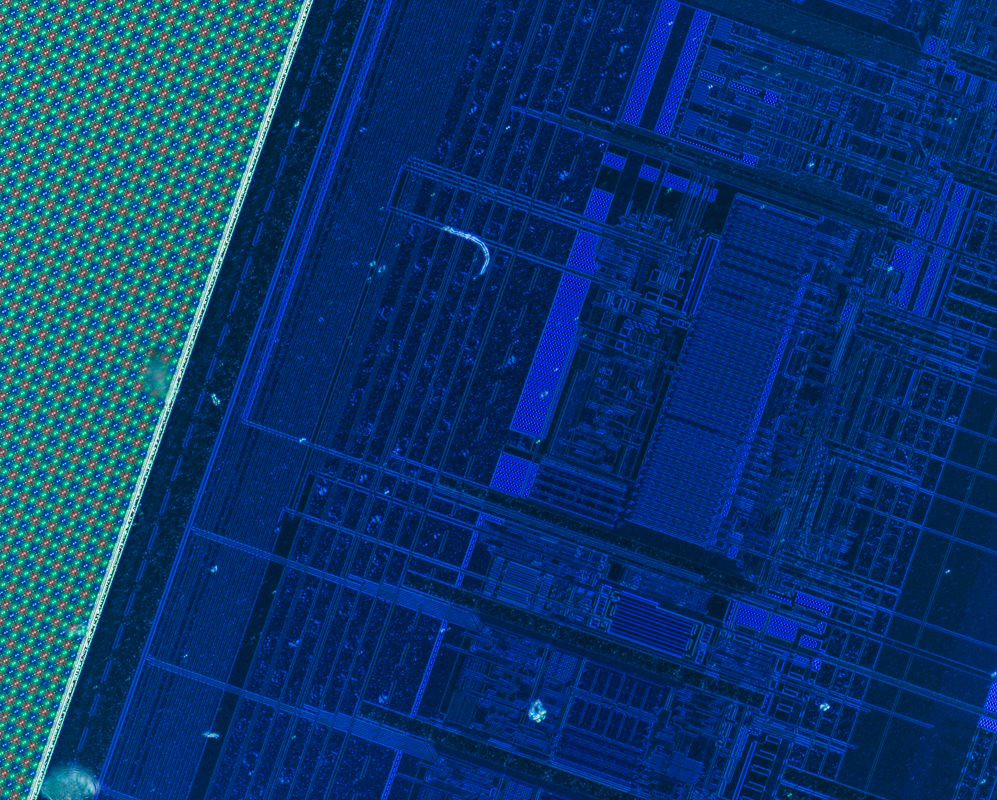
CCD-chip: bright field image with circular differential interference contrast; total image size approx. 500 µm x 625 µm; image taken by Gillian Kiliani
polarisation contrast
The following images of magnetic domains in a gadolinium-gallium-granate sample were taken with polarization contrast in reflection (left) and transmission (right) using a magnification of 50x. The total image size is about 200 µm x 250 µm.

